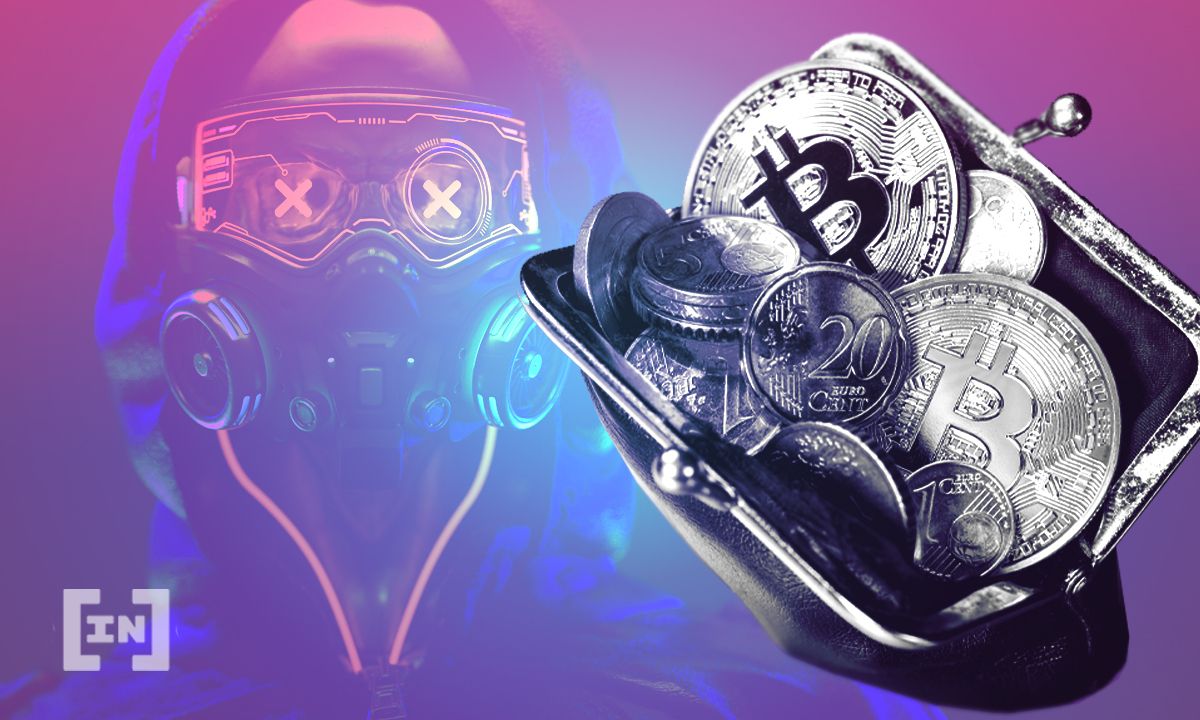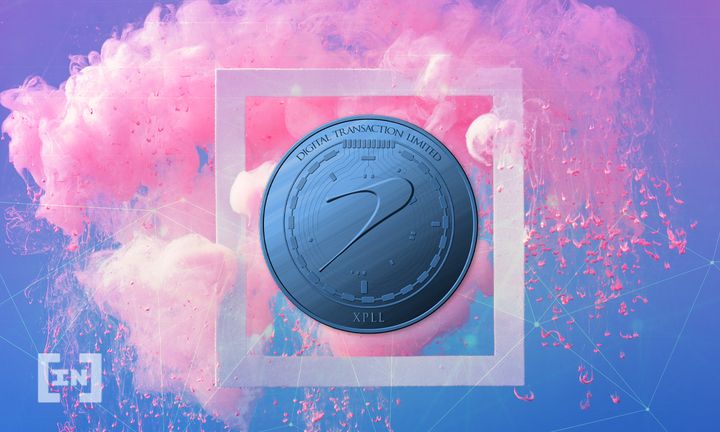Since it was first announced in 2019, ParallelChain™ has come a long way as a full-fledged blockchain ecosystem with a legitimate claim to the world’s “fastest public blockchain” title.
So, when Digital Transaction Limited announced the pre-sale of the XPLL token , the native utility token in the ParallelChain™ network, it expectedly invoked a largely favorable response from investors with a keen eye for new opportunities.
Given the buzz surrounding the pre-sale, BeInCrypto has decided to give it a closer look to determine whether or not this buzz surrounding ParallelChain™, and by extension, the XPLL token, is backed by a strong technological foundation with good economic prospects.
Let’s begin with an overview of ParallelChain™ and the team behind it.
What is ParallelChain™?
ParallelChain™ is the brainchild of Digital Transaction Founder and CEO Ian Huang, who saw an opportunity in the three major pain points plaguing first-generation blockchains, i.e. speed, scalability, and security.

In 2018, Huang assembled a team comprising experienced computer networking, cybersecurity, and computer design technologists along with a group of innovators from some of the world’s top universities. You can find more about the Digital Transaction team here.
Barely a few months into the team’s formation, Digital Transaction had already developed the early version of ParallelChain™, which has since evolved as a high-performance blockchain platform offering a transaction speed of more than 100,000 TPS, among other perks.
ParallelChain™ – How Does it Work?
ParallelChain™ is the first-of-its-kind platform packing private, public, and enterprise blockchains under the same roof. Yes, you can configure it into any of these three types depending on your requirements.
For example,
- You could use it as a private blockchain to securely host sensitive personal data and assets such as your cryptos, transaction records, biometrics, and such.
- Similarly, ParallelChain™ can equally and effectively morph into a public blockchain to serve as a distributed ledger offering data privacy and optimum efficiency. As previously stated, the public distributed ledger offers a lightning speed of 100,000 TPS, making it the fastest public blockchain in existence today.
- Meanwhile, enterprise users will have the option to deploy ParallelChain™ in a permissioned or permissionless mode to facilitate their business requirements.
ParallelChain™ keeps all inter-chain communication private and you could theoretically deploy as many differently configured ParallelChains as you want to enable cross-platform transactions.
Under the Hood
The MainChain is the public layer of the network and it has been optimized to facilitate transactions while allowing anyone to access and audit transaction records.
ParallelChain™’s real-time latency at 0.003 second, coupled with its lightning-fast throughput, means it is the only blockchain platform able to emulate the internet “even faster” with the speeds and bandwidths needed to power any native applications, including bandwidth-hungry ones such as forex or crypto exchanges.
To make the ledger perform even more optimally, ParallelChain™ deploys a unique Proof-of-Immutability (PoIM) algorithm.
Simply put, PoIM is anchored in the Layer-1 architecture and it is a non-consensus-based mechanism. This means it doesn’t require any mining or consensus at the time of transaction validation and record writing.
Without delving too deep into the technical nitty-gritty, the key parties that PoIM takes into account while validating transactions are:
- Record Creators
- Selective Nodes, which can be chain participants or independent parties who have undergone the voluntary KYC process powered by Digital Transaction’s proprietary multi-biometric recognition technology.
Each public node is allowed to write its own records, which are then identified via the hash value that is stored by that particular node’s hash vault. The hash record of individual nodes remains hidden in their vaults unless they become relevant to transactions involving other nodes.
Overall, PoIM offers a higher efficiency and data privacy in the public ledger as compared to what we get from first-generation blockchains.
Key Perks of Deploying ParallelChain™
Based on our initial impression, it looks like the key features that make ParallelChain™ a formidable alternative to existing blockchain platforms are:
- A far superior throughput of more than 100k transactions per second.
- Ultra-low real-time latency (less than 0.003 seconds).
- Practically unlimited scalability with zero performance degradation
- The ability to instantly block double-entry.
- Quick and efficient migration from Ethereum and Hyperledger applications
- Compliance with data privacy regulations including GDPR – the only blockchain to date that guarantees this
ParallelChain™: Real-world Use Cases
Any technology — however sophisticated — is as good as its scope in real-world applications. The team behind ParallelChain™ seems to have done a neat job in ensuring that the technological foundation on this next-generation blockchain is based is fine-tuned to serve a diverse range of use-cases.
From facilitating Central Bank Digital Currency (CBDC), which has been the hot topic of discussion on government levels in many major economies, to enabling smart city infrastructures to share data with one-other transparently and efficiently, ParallelChain™ has multiple use cases that early blockchain platforms are simply incapable of solving.

The following is a rundown of some of ParallelChain’s real-life use cases:
- Fast Settlements: The high throughput guaranteed by ParallelChain™ makes it an ideal tool for cryptocurrency exchanges and financial services providers to expedite transactions and settlement times.
- Making KYC Manageable: Any large-scale organization handling massive amounts of KYCs usually finds it difficult to maintain, track, and update the data. Not to mention that the management of such huge volumes of data can be often error-prone. ParallelChain™ deploys its native eKYC-Chain to fully digitize the KYC process by offering perks like instant selfie-to-photo ID matching, anti-spoofing facial recognition, and duplicate record detection.
- No more data loss: Being tamper-proof and immutable, ParallelChain™ makes a good platform to host “virtual black boxes” for preserving data from IoT systems and vehicles. The blockchain ensures that the data stored in these systems are not irretrievably lost to physical damages or malicious actions such as cyber-attacks.
- Mitigating insider threats: Digital Transaction has skillfully blended its multi-biometric recognition technology with ParallelChain™’s native PreventiveChain to track all users in real-time using 2D/ 3D face ID biometrics with anti-spoofing. There is a separate AI system that warns administrators every time a malicious activity is detected. This appears to be a pretty effective preemptive way to counter cyber threats emanating from within an organization (Insider Threats).
- Better workforce management: Using ParllelChain™, organizations can log each internal activity and workflow process securely on the blockchain. The native ApprovalChain incorporates real-time image processing and millisecond facial recognition to ensure visibility and integrity along with the network.
Note that some of these use-cases have already made a big impact on a global scale. For example, ParallelChain™ was recently picked by global FinTech firm Paywiser as the underlying blockchain powering its KYC verification and card issuance processes, among other operations.
So as you can see, ParallelChain™ can serve as a versatile and sector-agnostic platform adding value in a wide range of transactional and commercial applications. Assuming that the platform lives up to its potential, the solutions it offers can be equally leveraged by organizations representing FinTech, Banking and Financial Services, Healthcare, Insurance, Cybersecurity, and practically any industry you could think of.
This is where the true potential of ParallelChain™ emerges as a credible blockchain ecosystem with good economic prospects. And that brings us to the pre-sale of the platform’s native XPLL token that seems to have caught the attention of the investors’ community worldwide.
The XPLL Token and ParallelWallet

XPLL Token
The team behind ParallelChain introduced the XPLL token earlier this year as a purpose-driven ERC-20 token that “fully utilizes Digital Transaction Limited’s competitive advantages that stem from its award-winning technology.”
As previously mentioned, XPLL is on a pre-sale and you can purchase it via a SAFT agreement. Once the pre-sale is over, the token will be listed on multiple popular exchanges.
The tokens will be minted by the end of Q2 2021 and listed on exchanges sometime around August. You can buy the XPLL token using USD, EUR, BTC, ETH, USDT, or USDC.
ParallelWallet
Once you receive your XPLL token stash, you can start redeeming them in exchange for Digital Transaction’s products and services. Alternatively, you can also hodl them by transferring to Digital Transaction’s homegrown ParallelWallet, or any other third-party wallet supporting ERC-20 tokens.

Speaking of the ParallelWallet, it is indeed packed with a range of high-end security features that collectively give it a clear edge over any run-of-the-mill third-party wallet. It has a Face-ID detection system with anti-spoofing technology, which means the wallet can instantly differentiate between a live face and a photo or video.
The wallet also supports palm recognition just in case you’re wearing a mask, as you should be in these trying times to protect yourself and others from COVID. Besides these security features, the wallet also supports real-time banking. All your transactions are verified and updated in as little as 0.003 seconds.
Also, any token holder with more than 100,000 XPLLs in their ParallelWallet is eligible to stake run and operating notes. They are essentially the maintenance crew of the network who earn XPLL tokens for their contributions.
Governance Council
A Governance Council will manage the XPLL ecosystem and take important decisions through a democratic process. Members of the Council will be elected for two years by way of a two-thirds majority of votes. Each Council member will receive a remuneration package of 1,000,000 XPLLs at the start of their term.
Conclusion
So, as you can see, XPLL is a good way to earn a stake in and benefit from the ParallelChain™ ecosystem if you are convinced about its future potentials. And if you are indeed convinced, you may apply to participate in the pre-sale via the official Digital Transaction Limited website.
As always, just make sure to do your homework thoroughly and consult an investment expert, if need be, before going all-in with the purchase.
As for our observation, the ParallelChain™ ecosystem seems quite promising judging by the way it has progressed over the past couple of years. It offers multiple use-cases while solving some of the major pain points left unresolved by the likes of Ethereum, Polkadot, etc. This explains the largely positive feedback the pre-sale has so far gathered.
Disclaimer
In compliance with the Trust Project guidelines, this guest expert article presents the author’s perspective and may not necessarily reflect the views of BeInCrypto. BeInCrypto remains committed to transparent reporting and upholding the highest standards of journalism. Readers are advised to verify information independently and consult with a professional before making decisions based on this content. Please note that our Terms and Conditions, Privacy Policy, and Disclaimers have been updated.

